Nexus 7 (2013) - Mini Review
by Brian Klug on July 27, 2013 12:54 AM EST- Posted in
- Tablets
- Snapdragon
- Qualcomm
- Android
- Mobile
- APQ8064
- Nexus 7
- Android 4.3
Last year the Nexus 7 debuted with a Tegra 3 SoC, which for reminder consisted of a 4+1 architecture of ARM Cortex A9 CPUs, with the 4 A9s built on 40nm G, and the +1 “shadow core” A9 built on 40nm LP (TSMC’s 40 LPG process), accompanied by ULP GeForce GPU with 12 cores running at a max GPU clock of 416 MHz. The exact SoC was NVIDIA’s Tegra 3 T30L, which could run one A9 at up to 1.3 GHz and all A9s at up to 1.2 GHz.
Rather than the relatively logical upgrade path of going to NVIDIA’s Tegra 4 SoC (I’ve heard all manner of speculation about what happened there), the new Nexus 7 switches to Qualcomm’s APQ8064–1AA, a version with 4 Krait 300 CPU cores (yes, Krait 300, not 200) running at up to 1.5 GHz and Adreno 320 graphics. Rather than use a PoP and LPDDR2, this specific APQ8064 variant goes to PCDDR3L–1600 MHz instead, including 4, 4Gb discrete 1.35V SK-hynix DRAM devices off to the side (more on the opposite side of the PCB) adding up to 2 GB of RAM. Qualcomm's Snapdragon S4 Pro and Snapdragon 600 branding gets confused here, although Qualcomm is calling the APQ8064 inside the Nexus 7 (2013) S4 Pro, it's more like an underclocked or lower binned Snapdragon 600.
At this point APQ8064 is probably the most well understood SoC in recent memory (so much so that I’m pining for devices to include something different just from an academic perspective) so I’ll spare the very verbal discussion about its performance.
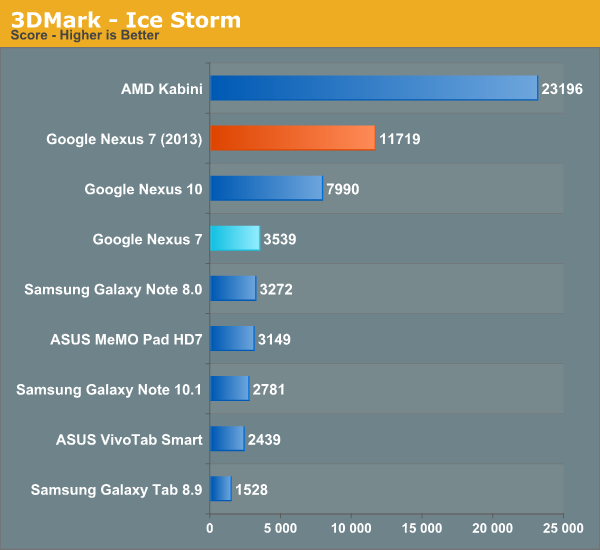



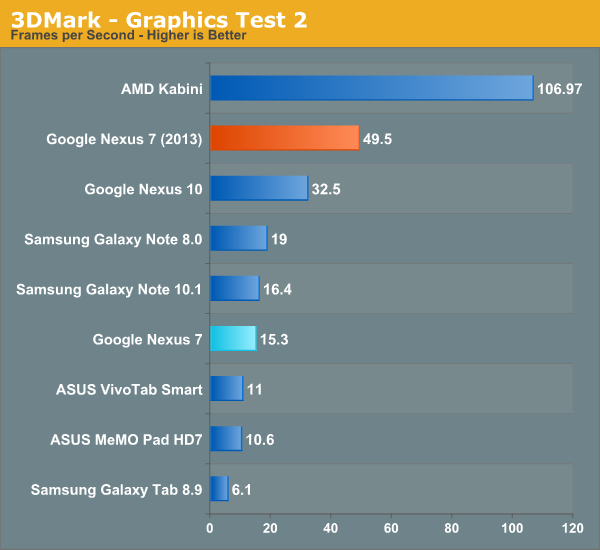
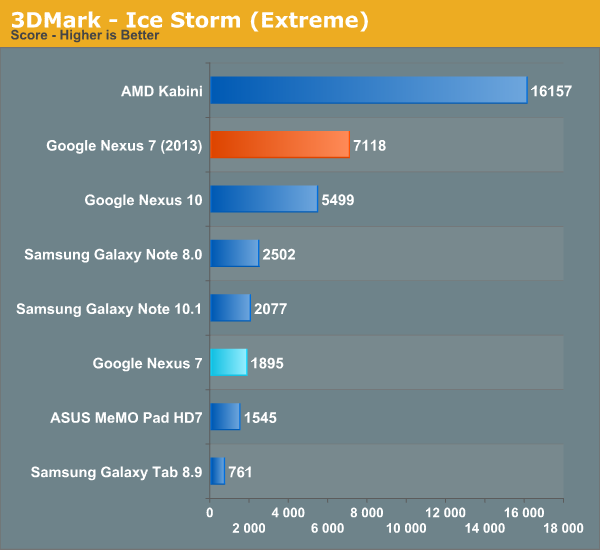

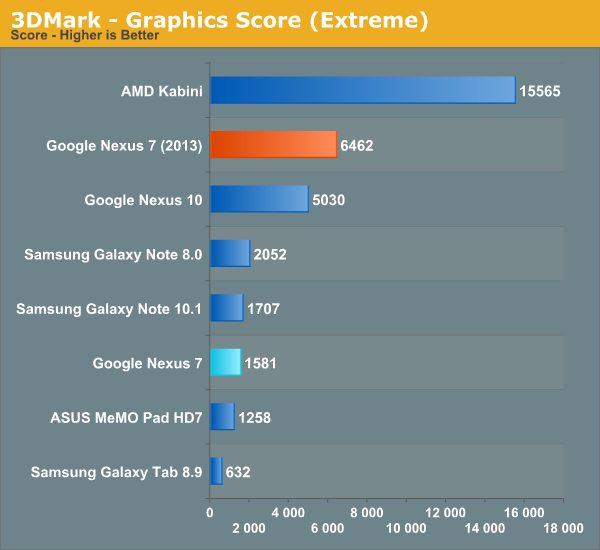

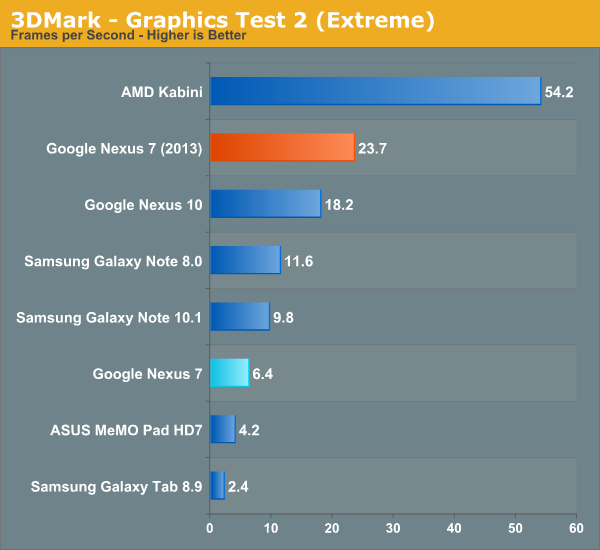


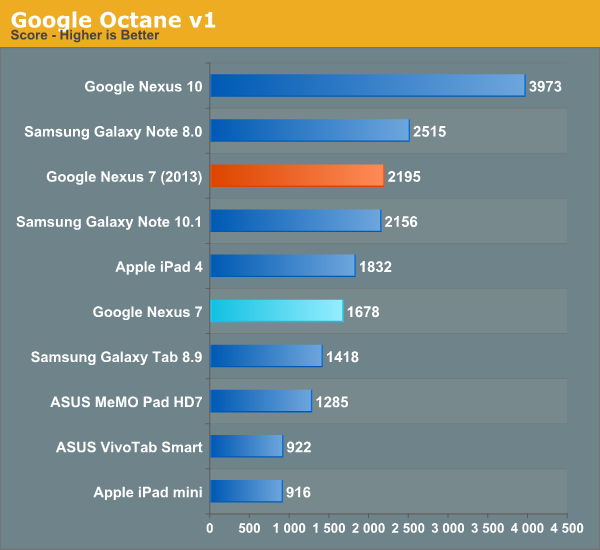
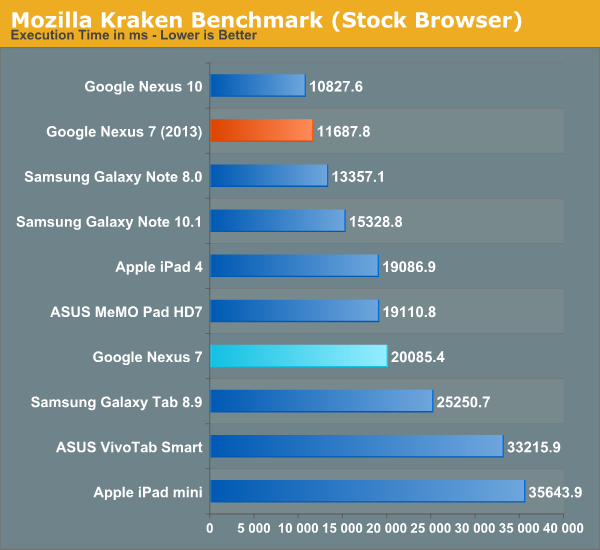
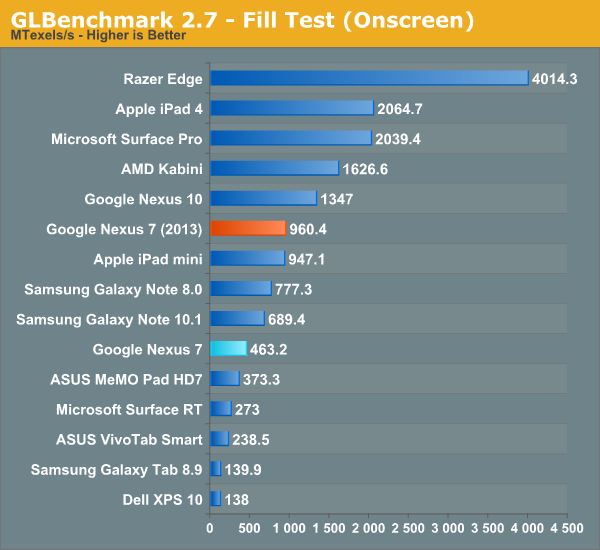
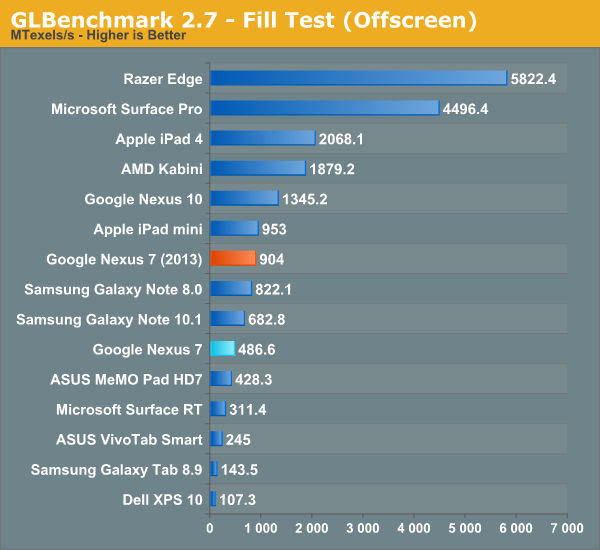
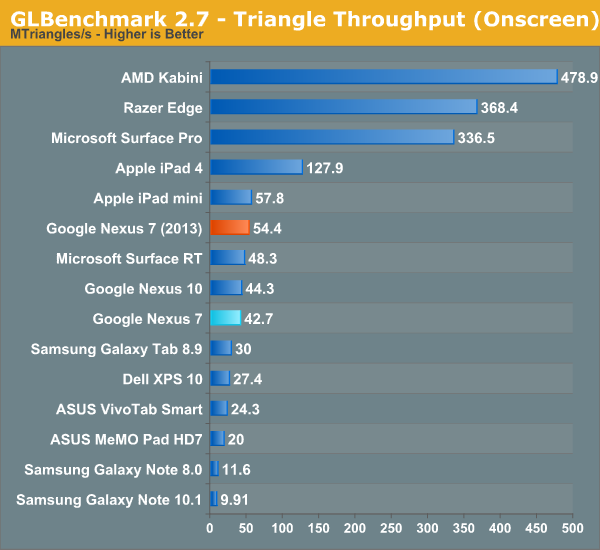
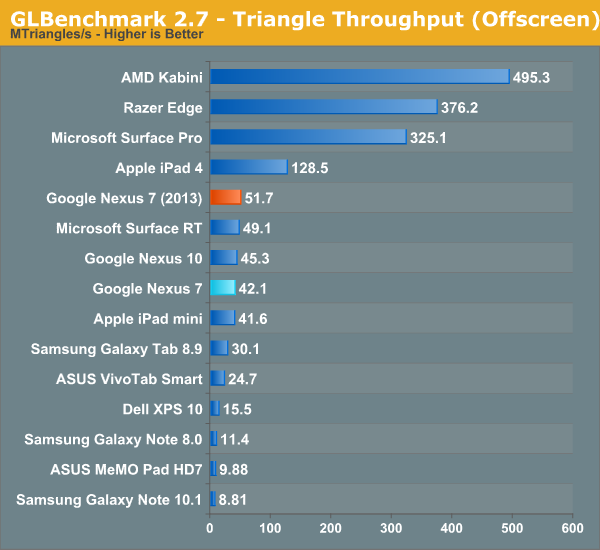
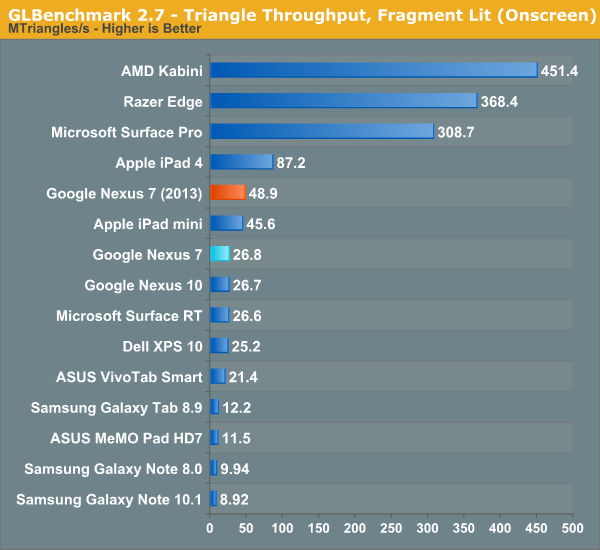
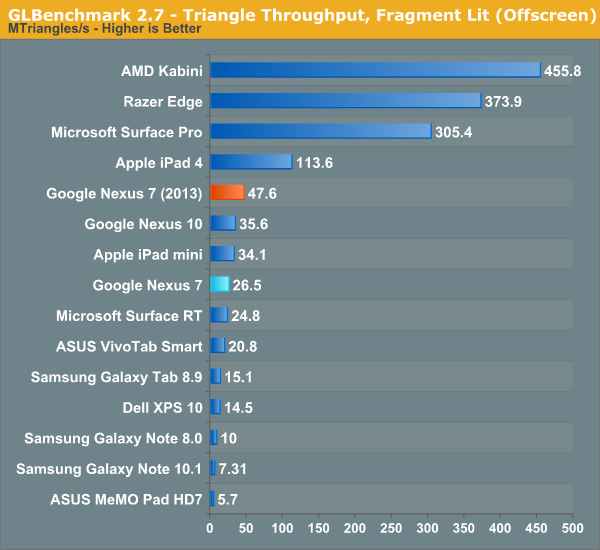
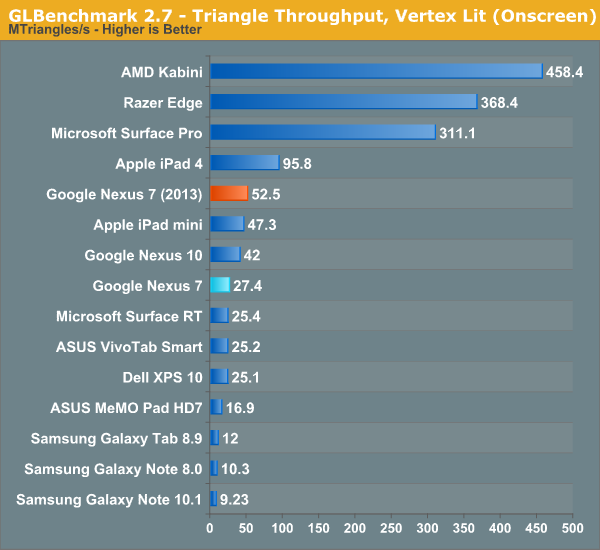
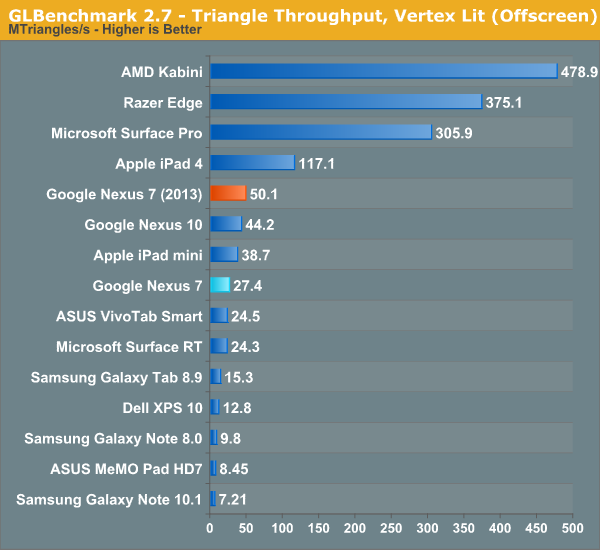

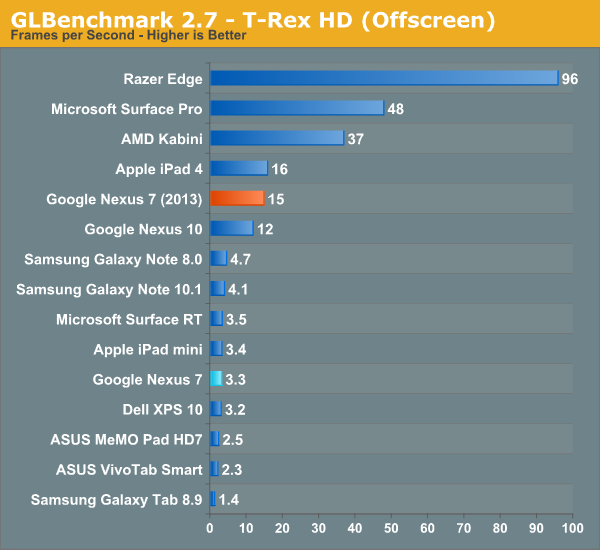
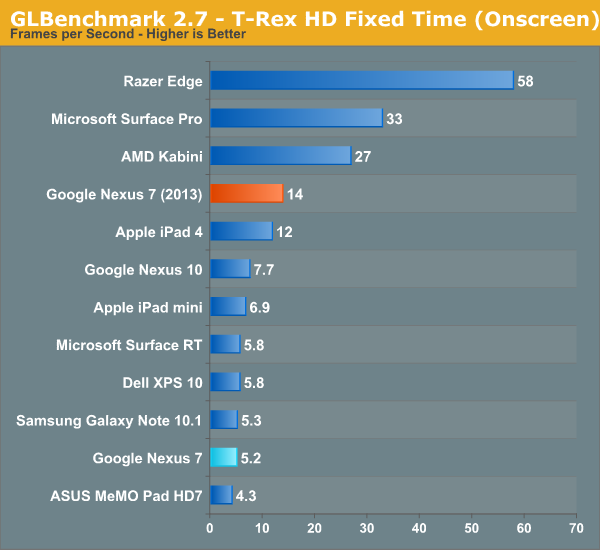
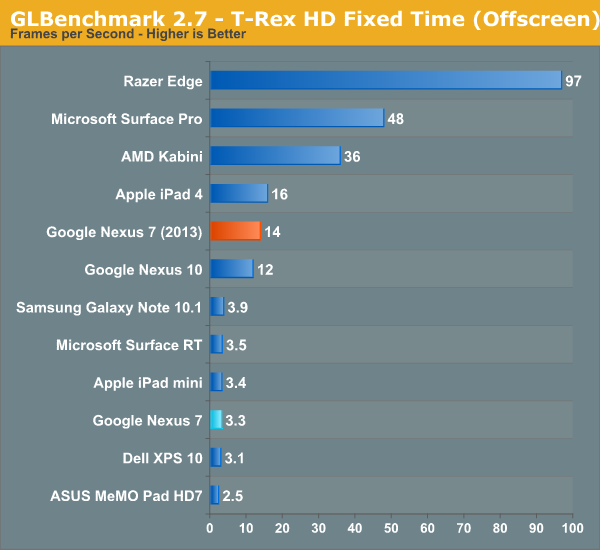
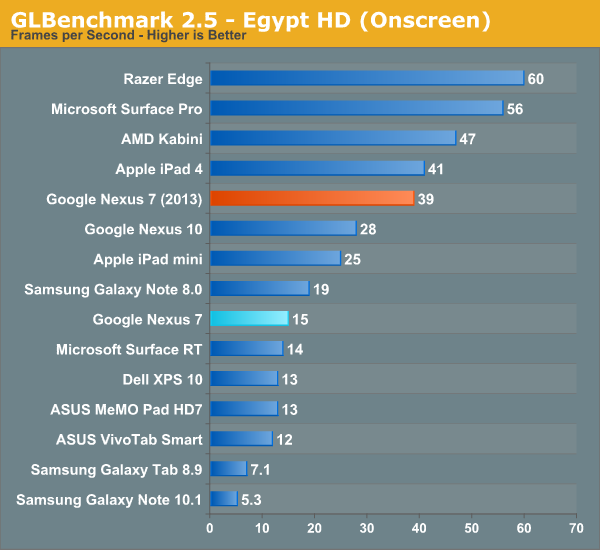
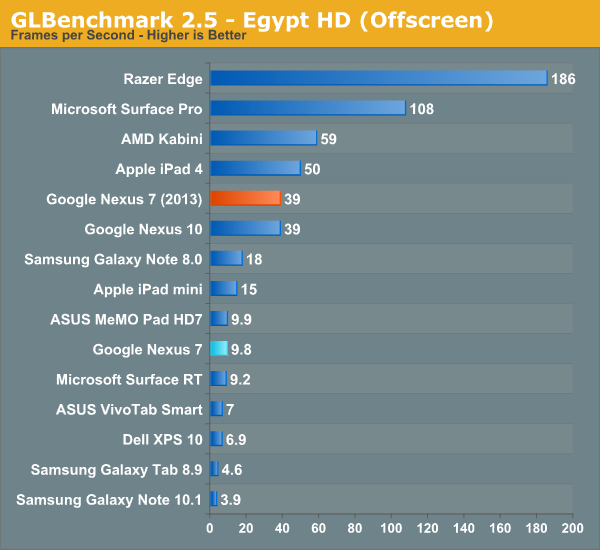
Suffice it to say, moving from 1.2–1.3 GHz Tegra 3 to 1.5 GHz APQ8064 represents a big jump forwards in performance. Google claimed 1.8x improvement on CPU performance, and 4x improvement on GPU, which gets validated pretty much consistently through the benchmarks. I never felt like Tegra 3 was a slouch by any means (performance was more I/O bound on the OG Nexus 7, which we’ll talk about in a moment), but the new Nexus 7 has ample performance for the considerable increase in screen resolution.
Dat eMMC
It wasn’t any secret with the original Nexus 7 that much of the real world performance was gated by storage I/O throughput – we wrote about it after all – and storage performance was a common complaint while multitasking on a few other previous and similar era ASUS tablets. Most of the time performance was acceptable, and for $200 you can’t complain too much about things, the issue was that further on in the life of the tablet performance began degrading somewhat notably, leading to complaints.
Obviously the first thing I did on the Nexus 7 (2013) was run Androbench with the same 100 MB settings to test and see what out of box I/O performance looks like. Things are much better with the new Nexus 7 than they were with the previous one, so at a high level all is good.
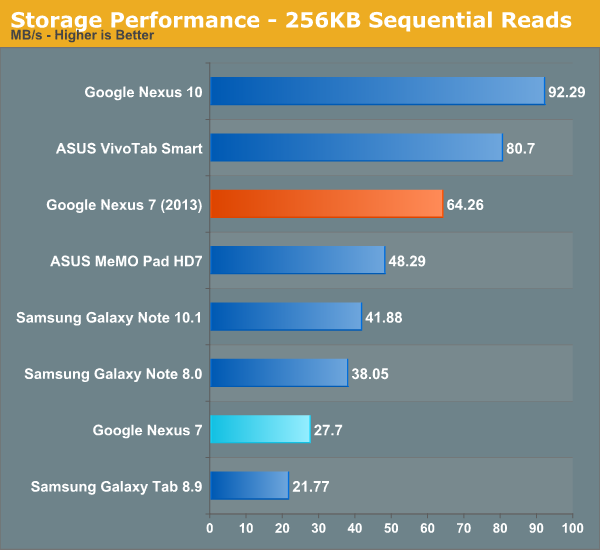
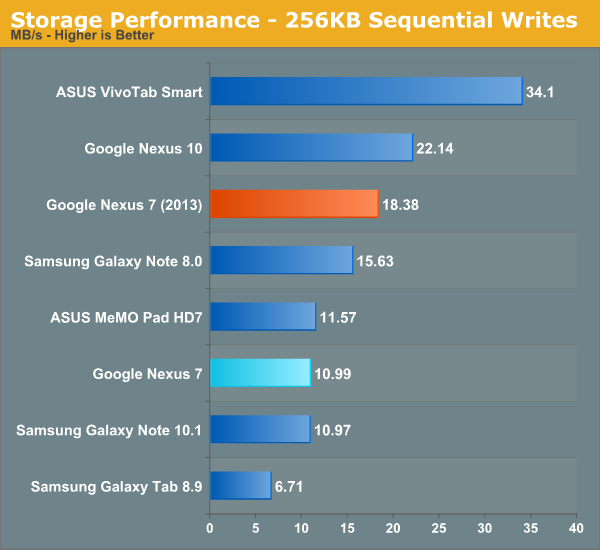
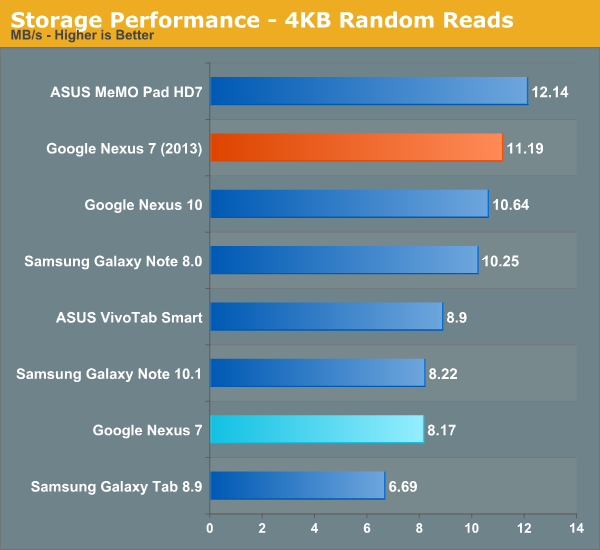

The story actually is a bit more involved however. One of the big problems was that the slowness which occurred with the prior Nexus 7 took device aging to appear – it was great for the first few months, but after you started loading it things tailed off. The new Nexus 7 (2013) with Android 4.3 includes support for fstrim, essentially idle garbage collection, which TRIMs the eMMC when a few conditions are met – the device is idle, screen off, and battery above roughly 70-percent. I’m told that TRIM support has been part of the eMMC standard since around version 4.2, it was just a matter of enabling it in software. The result is that the new Nexus 7 shouldn’t have these aging affects at all. Better yet, fstrim support has also been added to the old Nexus 7 with as of the Android 4.3 update, so if you’ve got a Nexus 7 that feels slow, I/O performance should get better after fstrim runs in the background. I'm checking on whether the other Nexus devices have also had TRIM support added. I would consider the slow storage aging problem fixed as of now, and Google took the eMMC and storage I/O performance issues with the previous Nexus 7 to heart for this version.


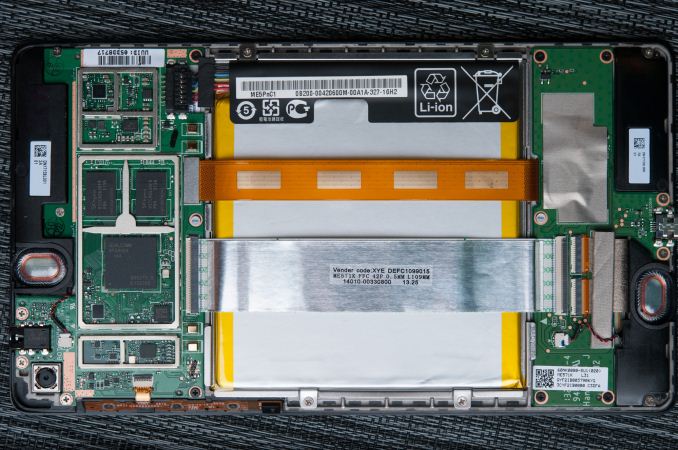
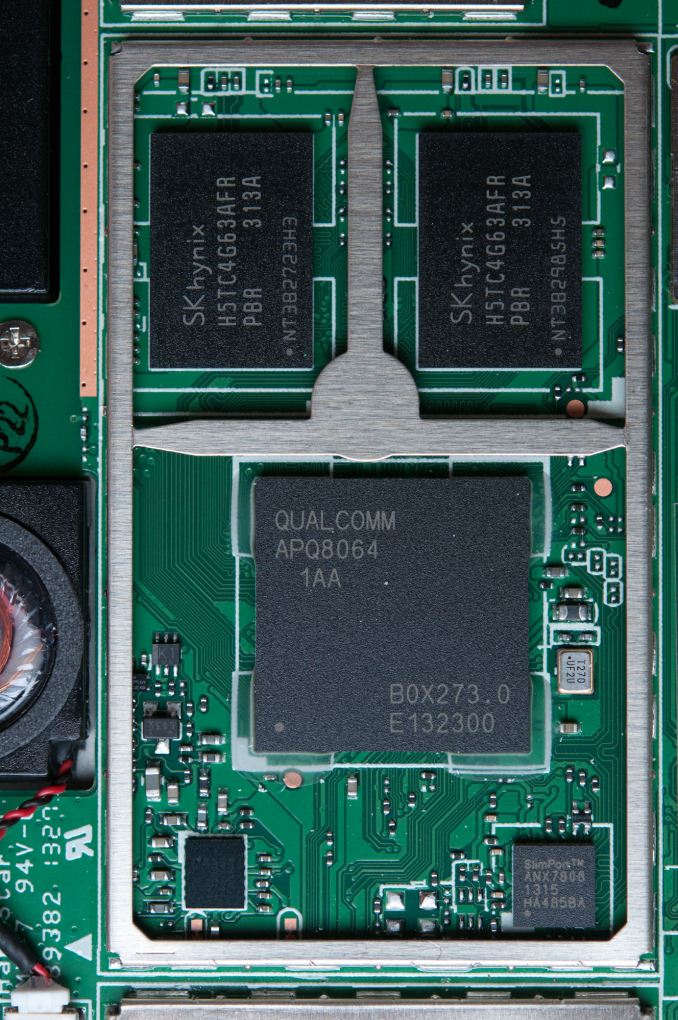














252 Comments
View All Comments
phillyry - Wednesday, July 31, 2013 - link
Not necessarily. I'm an iPad user but almost want the Nexus more because of that. It makes me want to have another device that is different from the one I have, so that I don't just have a bunch of repeats of essentially the same iOS device, with different screen sizes.Having a Nexus 7 in the middle of an iPhone 5 and iPad 3 might be more distinguished than a Retina Mini (if it ever comes to fruition).
ESC2000 - Tuesday, August 6, 2013 - link
The screen on the mini may be physically bigger but as you note, there are more pixels on the nexus 7. Thus you can actually display more on the nexus 7 screen even though it is smaller. One review noted that the mini only has 34% of the pixels the nexus 7 has, so even though the mini has 25% more screen t real estate, the nexus 7 displays more on its screen than the mini.The nexus 7 2013 blows the mini out of the water. I have used them side by side and the only potential positive for the mini is the apple ecosystem if you care about that. IOS may be somewhat more advanced in terms of tablet-specific apps but android is quickly catching up and at this point I don't think it makes sense to choose a device on that basis especially when there is a better device at a fantastic price.
Someone said it is unfair to compare the 2013 nexus to the 2012 mini which may be true but you have to keep in mind that the "2012" mini came with 2010 parts. (I suspect apple had extra parts from the first and second iPads that it wanted to use up.) A $330 (for the base model! Add $100 for 16 GB more storage and another $150 for cellular) device that has an 8" 1024x768 screen, a dual core A5 processor, and 512 MB RAM in late 2012? Pretty pitiful. If any other company made such a product for $330+ everyone - reviewers, consumers, etc - would laugh it out of the room if they were even aware of it. As for the tired argument that apple products perform above their specs in real world usage, try again. I have used my brother's mini and the nexus together and the nexus is more responsive and doesn't slow down when I have a lot of tabs open and a lot of apps running at the same time. The home button on my brother's mini no longer works, which also makes navigating on it a pain. Plus the mini's screen looks terrible next to the nexus. Oh and the lack of swipe on the mini makes typing more tedious. This of course is because sole won't let you change your default keyboard for cripe's sake.
So, yes, in some ways the comparison of the 2013 nexus and the 2012 mini is unfair, but apple exacerbated its failure to measure up by gimping the mini with 2010 parts. The 2013 (2014?) Mini will likely some some of these problems but if apple fixes all the mini's defects, the result would cost an arm and a leg, so I'm not holding my breath. Either we get another meh product at $330+ or we get a better product at $400+ (or more).
Krysto - Saturday, July 27, 2013 - link
There's a very high chance there won't be an iPad Mini this year.They are already losing money on tablets, because the Mini is outselling the regular iPad, and they get less profit on each. So they'll want to milk that as long as possible, while the cost of components drop, and they don't want to put a retina display in it for the same reason.
Plus, are they just going to release all iOS devices at once this year? That doesn't make sense. My guess is they also want to release the more expensive iPad and the new iPhone with the new iOS, to entince people to buy the more expensive versions...and then only release the iPad Mini with iOS7 next spring.
But, by then there will be only a few months left until 3rd gen Nexus 7 comes out (next year it will probably be released end of May or in June).
Daniel Egger - Saturday, July 27, 2013 - link
Very nice. So I guess only a couple of questions remain:1) How can I get HDMI out the thing?
2) Can it play Flash 10+?
3) When will there be an alternative operating system without all the google spyware available also capable of Flash?
Broo2 - Saturday, July 27, 2013 - link
1. you can buy a SlimPort adapter to convert the MicroUSB to HDMI2. It doesn't appear to support flash out-of-the-box and Adobe has discontinued flash for all mobile products. Someone may compile a version for Android 4.3, but better if it just dies off.
3. Very doubtful. You can eventually unlock and install a custom ROM, but those will all be mostly enthusiast variants of Android. Mayhaps an enthusiast will will make a custom version of Linux, but it will require them to recompile/debug all of the hardware drivers for the device.
Death666Angel - Saturday, July 27, 2013 - link
Great "mini" review! :)This thing looks fantastic. I've been meaning to get a 7" tablet for a while. Still would like a 6.5" phone more, but those are rare. The LTE pricing is a bit high (2012 model costs only 50€ more for modem variant). And your table shows the 2012 Nexus 7 with 8/16GB when all I can find now on the Google PlayStore is 16/32 for 199€/249€.
Death666Angel - Saturday, July 27, 2013 - link
Oh, and since I sometimes berate you for using US units, I now want to applaud you for using metric units. :)Laksefar - Saturday, July 27, 2013 - link
Does anyone know if we'll be able to make GSM calls with the 4G version? Would love the new Nexus 7 to be my next "phablet"baileyjr1972 - Saturday, July 27, 2013 - link
Thats what I was wondering myself :-)Sunburn74 - Saturday, July 27, 2013 - link
Use groove IP with google voice on your tablet and its essentially a phablet anywhere you have wifi